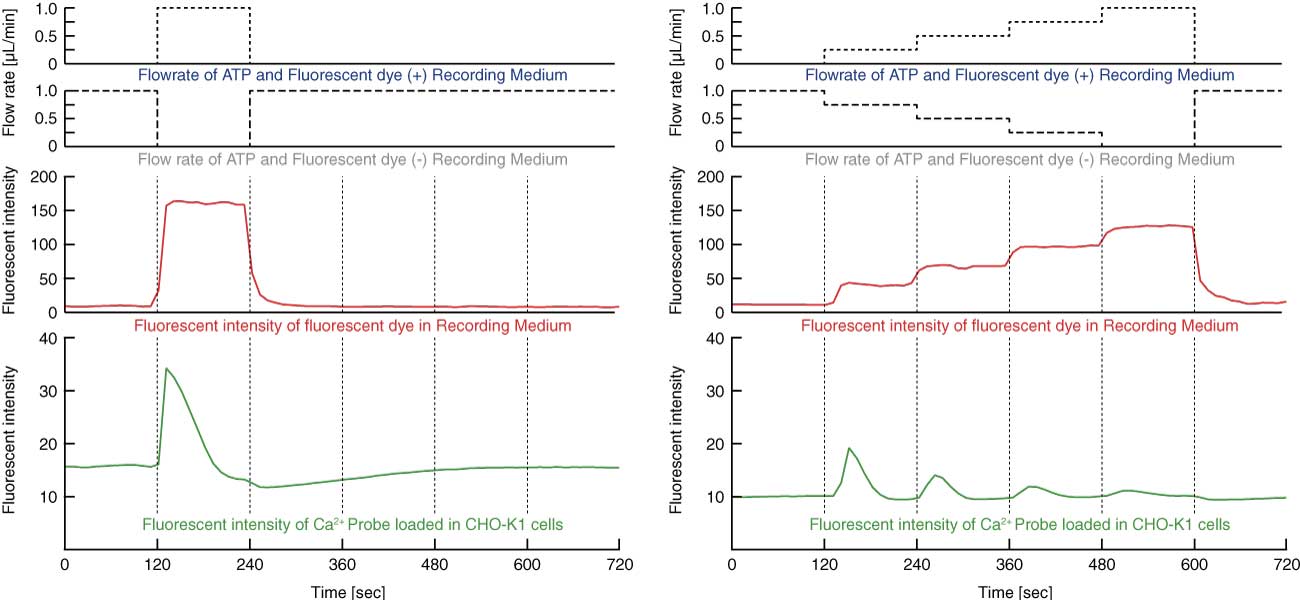Abstract
Temporal change in signal molecule concentration is a significant trigger for cells to regulate their functions. In this study, we have developed a simple microfluidic cell culture system which provides time-varying patterns of concentration to cells. Signal molecule concentration in the cell chamber is controlled by changing the flow-rate ratio between a signal molecule-containing medium and a normal medium. We designed the dimensions of microchannels to improve hydrodynamic response, prevent backward flow and reduce hydrodynamic shear stress on cells.
Quantitative evaluation of signal molecule concentration was performed by measuring the concentration of a fluorescence dye distributed in a medium as a visible substitute for signal molecule. When the pumps were operated in on-off mode, the concentration varied with time like a rectangular wave. Next, we changed the flow rates along a triangular waveform. Then, we could successfully regulate the concentration along the input waveform. To demonstrate its usefulness in the cell signaling study, we have measured Ca2+ concentration in Chinese hamster ovary (CHO-K1) cells which are exposed to time-varying concentration of adenosine triphosphate (ATP). When a rectangular pulse of ATP concentration was applied to the cells, Ca2+ concentration increased quickly in response to a rise of ATP concentration. Moreover, several peaks of Ca2+ concentration were observed in response to stepwise increase in ATP concentration.
 Dynamic control of signal molecule concentration
Dynamic control of signal molecule concentration
 Intracellular Ca2+ concentration response of CHO-K1 cells
Intracellular Ca2+ concentration response of CHO-K1 cells
Collaboration
- Kuroda Lab, University of Tokyo
Sponsor
- JST